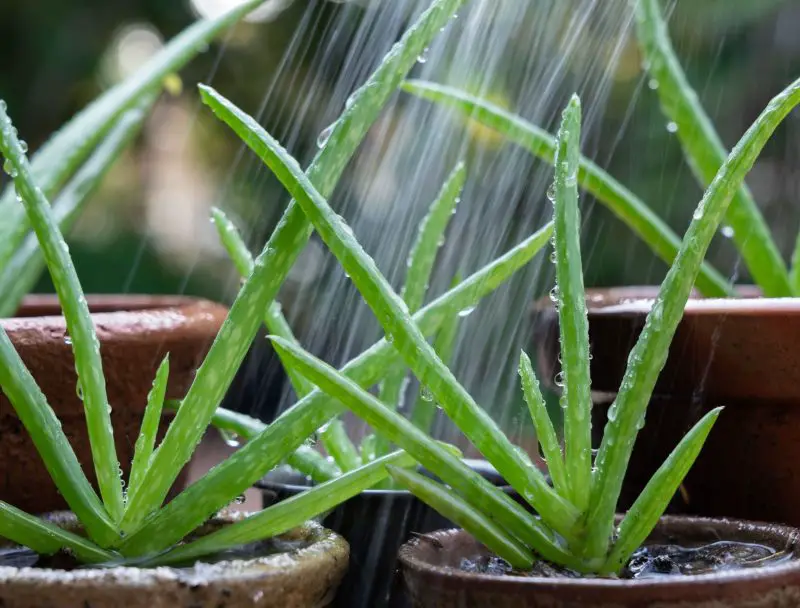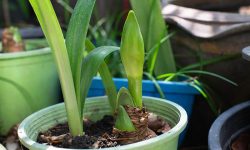Aloe vera plants are loved by gardeners and houseplant enthusiasts for their beauty, healing qualities, and ease of care. But even the hardiest plants can suffer from overwatering or underwatering if their natural needs are misunderstood. When it comes to aloe vera, watering is the most common mistake that leads to plant decline. Knowing how often to water an aloe vera plant without killing it is key to maintaining its health and encouraging strong, succulent growth.
This succulent plant thrives in dry environments and stores water in its thick leaves. It is uniquely adapted to survive in arid conditions, but when grown indoors or in gardens outside its natural habitat, it needs some help. Striking a balance in watering frequency based on light, temperature, soil, and pot size ensures aloe vera flourishes. Misjudging this can quickly lead to root rot or dehydration. Understanding the signals the plant gives and creating a care schedule based on its environment helps keep it healthy year-round.
Whether you’ve just brought home your first aloe vera or you’ve been growing it for years, learning exactly how and when to water it can make all the difference. This article breaks down every aspect of aloe vera watering in detail, from climate to potting mix, so you can confidently care for your plant without fear of harming it.
Understanding Aloe Vera’s Natural Habitat and Water Needs

Aloe vera is native to arid desert regions where rainfall is infrequent but often heavy when it comes. The plant evolved to store water in its thick, fleshy leaves, making it drought-tolerant and resistant to dry spells. These adaptations allow aloe vera to survive in conditions that would quickly damage other plants. Because of this, aloe vera is extremely sensitive to overwatering, a mistake that’s more common than underwatering in home environments.
In its natural setting, aloe vera grows in sandy, fast-draining soil under full sun. It absorbs rainfall quickly and uses it sparingly. These growing conditions should guide how often you water aloe at home. Replicating the environment of aloe vera’s origins is the first step to understanding how little water it actually needs to thrive.
When kept indoors or in containers, aloe plants depend entirely on your watering habits. In nature, rainfall patterns determine how the plant absorbs and retains moisture. At home, the frequency, amount, and timing of watering are all under your control. Paying close attention to how aloe vera behaves in different conditions allows you to prevent watering mistakes that could slowly damage its roots or structure.
The Role of Soil Type in Aloe Vera Watering Frequency
Soil plays a critical role in determining how often aloe vera should be watered. Fast-draining, gritty soil helps replicate desert conditions and prevents water from pooling around the roots. Aloe vera roots are highly susceptible to rot when exposed to moisture for extended periods. This makes regular potting soil a poor choice unless amended with materials that increase drainage, like perlite, coarse sand, or pumice.
If your aloe is planted in compact or moisture-retaining soil, you’ll need to water it far less often. However, the better solution is to repot it using a specialized succulent or cactus mix that mimics the porous desert soil it prefers. When the right soil is used, water passes through quickly, and the plant only absorbs what it needs. The soil dries out in a few days, reducing the risk of overwatering and allowing the roots to breathe.
Drying time varies depending on environmental conditions, but well-draining soil typically dries within 5 to 10 days. This means your watering schedule should align with how quickly the soil dries out, not how many days have passed since the last watering. A simple finger test into the top few inches of soil can help determine if it’s time to water again.
How Light Affects Aloe Vera’s Watering Schedule
The amount of sunlight your aloe vera receives directly influences how often it needs water. Aloe vera grown in full, direct sunlight will consume water more quickly than one kept in a dim corner or shady window. Light encourages photosynthesis and metabolic activity, which in turn uses up the moisture stored in the leaves and roots. A plant that is actively growing under good light will need to be watered more often than one that’s dormant or stressed due to insufficient sunlight.
Indoor aloe vera plants placed near south or west-facing windows receive the most intense light. These plants typically dry out faster and need watering roughly every 10 to 14 days, depending on temperature and humidity. In contrast, aloe kept in low light can hold moisture much longer, sometimes up to three weeks or more. However, if light is too low for extended periods, the plant’s health will eventually suffer due to slowed growth and a higher risk of root issues.
Outdoor aloe vera grown in full sun may require more frequent watering in hot, dry climates but still needs time between waterings for the soil to completely dry. Cloudy weather, seasonal changes, or shading from buildings or trees can affect how long the soil stays moist, making it essential to assess conditions continuously instead of following a rigid schedule.
Pot Size and Material Influence Water Retention
The type of pot you use and its size can dramatically impact how much water your aloe plant needs. Larger pots contain more soil, which holds more water and takes longer to dry out. Smaller pots dry more quickly and are better suited to plants like aloe vera that prefer drought-like conditions. If your aloe is in a large container relative to its size, you’ll need to water less frequently than if it were in a smaller one.
Pot material also plays a role in moisture regulation. Terracotta pots are ideal for aloe vera because they are porous and allow moisture to evaporate from the sides. This results in faster drying soil and better root aeration. Plastic or glazed ceramic pots, on the other hand, trap moisture and slow down evaporation. Aloe in non-breathable containers often remains moist longer and should be monitored carefully to prevent overwatering.
Drainage holes at the bottom of the pot are essential for aloe vera. These holes prevent water from sitting at the bottom of the container and soaking the roots. If your pot lacks drainage, water can accumulate and lead to root rot even if you’re not watering frequently. Always ensure your container has proper drainage to maintain healthy root conditions.
Seasonal Changes Affect Aloe Vera Watering Needs
Watering frequency must be adjusted with the changing seasons. During the spring and summer, aloe vera enters an active growth phase and typically requires more frequent watering. In warm temperatures with increased light exposure, water evaporates quickly, and the plant uses moisture more readily to fuel growth and photosynthesis.
As temperatures drop in autumn and winter, aloe vera goes into a dormant state where it slows its metabolic processes. During this time, the plant’s need for water decreases significantly. Soil takes longer to dry, and overwatering becomes a much greater risk. Many aloe growers water only once every 3 to 4 weeks during the colder months, especially for indoor plants kept in stable environments.
Always let the soil dry out completely before watering during the winter months. If unsure, it’s safer to wait a few extra days than to water too early. Watch for signs of dehydration, like slightly shriveled or wrinkled leaves, but avoid mistaking these for symptoms of poor care. Aloe vera can tolerate drought far better than excess moisture.
Recognizing Overwatering and Underwatering Signs
Learning to recognize the symptoms of overwatering and underwatering is crucial for aloe vera care. Overwatering usually presents itself through soft, mushy, or yellowing leaves. These changes are caused by waterlogged roots that can no longer supply oxygen. If not addressed quickly, this can lead to root rot, which is difficult to reverse. An unpleasant odor coming from the soil is also a strong sign of excess moisture and rotting roots.
Underwatering, on the other hand, results in dry, shriveled, or curling leaves. The leaves may become thinner and lose their usual firmness. This occurs because the plant is using up its internal water reserves without being replenished. However, aloe vera can survive long periods without water, and mild dehydration is easier to correct than root damage caused by overwatering.
Checking the soil before watering is the best way to avoid either extreme. If the top few inches feel completely dry and the pot feels significantly lighter than usual, it’s likely time to water. If the soil feels damp or cool to the touch, wait a few more days and check again.
How to Water Aloe Vera Properly
The correct method of watering aloe vera involves deeply soaking the soil until water runs out of the drainage holes. This ensures that the roots receive enough moisture and encourages the plant to develop deep, strong roots. After watering, allow all excess water to drain away completely, and never let the pot sit in a saucer of standing water.
Once you’ve watered your aloe, don’t water again until the soil is fully dry. Consistency is more important than frequency. Aloe vera doesn’t like to be misted or watered from the top unless it’s a small seedling. Instead, direct the water at the soil level to avoid moisture collecting in the crown of the plant, which can lead to rot.
If your aloe is in a particularly large or deep pot, check the moisture level at the base of the container. Even if the surface appears dry, the soil near the roots might still be moist. A moisture meter or a wooden skewer inserted into the soil can help you determine whether watering is necessary.
Environmental Factors That Alter Watering Needs
Humidity levels, air circulation, and ambient temperature all influence how quickly aloe vera soil dries. In high-humidity environments, water evaporates more slowly, which means less frequent watering is needed. In contrast, dry air accelerates evaporation and increases watering needs. Air circulation around the plant also helps dry the soil more evenly and prevents fungal issues.
Plants kept near heating or air conditioning vents may dry out faster due to the constant air movement and temperature changes. Those in bathrooms or kitchens with higher humidity may need less water. Knowing the microclimate of your home helps you better estimate how often to water without relying on rigid schedules.
The altitude and general climate of your location also play a role. In desert regions or during heat waves, you might need to water aloe vera more often. In coastal, cool, or cloudy areas, you can go longer between waterings. Observing your plant’s behavior is always more accurate than trying to apply general rules.
Adjusting Watering for Aloe Vera Offsets and Transplants
When propagating aloe vera from offsets or repotting a mature plant, watering routines must be adjusted. Fresh cuttings or baby plants need time for their roots to develop, and watering too soon after planting can lead to rot. It’s best to wait a few days after repotting before watering, giving any root damage time to heal and callous.
Newly planted aloe vera may not need water until the soil dries out, which can take longer in denser pots. Once the roots are established, the plant can follow the same watering routine as a mature specimen. Monitor its leaves for firmness and fullness, as these indicate that water is being properly stored and used.
Avoid fertilizing or watering heavily during the first few weeks after transplanting. Focus on keeping the soil barely moist, letting the roots acclimate to the new environment. Over time, the plant will begin growing again, and its water needs will become more predictable.
Troubleshooting Aloe Vera Watering Issues
If you’ve followed proper watering techniques and your aloe is still struggling, consider checking for hidden problems. Poor drainage is a leading cause of issues in potted aloe vera. Ensure that both your potting mix and container allow water to pass through easily. Compacted or clay-heavy soil should be replaced with a cactus blend for better moisture control.
Aloe vera that shows consistent signs of stress, like drooping, discoloration, or leaf loss, may be experiencing a combination of problems, including poor lighting or temperature stress. Evaluate the entire growing environment, not just the watering schedule. Sometimes, a slight adjustment in light or soil can restore the plant’s health without major intervention.
Repotting may be necessary if your aloe has outgrown its container or if root rot is suspected. Gently remove the plant, inspect the roots, and trim any blackened or mushy parts. Allow the roots to dry for a day before replanting in fresh soil. Resume watering only once the plant shows signs of recovery and new growth.
FAQ About How Often to Water Aloe Vera Plant
How do I know when my aloe vera needs water?
You can tell your aloe vera needs water when the top 2 to 3 inches of soil are completely dry. Another sign is slightly wrinkled or thinner leaves, which indicate the plant is using its internal moisture reserves. It’s best to check the soil moisture with your finger before watering to avoid overwatering.
Can I water my aloe vera once a week?
Watering once a week may be too frequent unless your plant is in very hot, dry conditions with excellent drainage. For most indoor environments, watering every 10 to 14 days in summer and every 3 to 4 weeks in winter is more suitable. Always let the soil dry out completely between waterings.
What happens if I overwater my aloe vera?
Overwatering leads to soggy soil and suffocates the roots, which can cause root rot. Symptoms include yellowing leaves, mushy stems, and an unpleasant smell from the pot. Severe overwatering can kill the plant if not corrected quickly by removing damaged roots and replanting in dry, well-draining soil.
Should I mist my aloe vera plant?
No, misting is not necessary for aloe vera. This succulent prefers dry conditions and stores moisture in its leaves. Misting can create excess humidity and may cause water to settle in the rosette, increasing the risk of rot or fungal issues.
Does aloe vera need more water during hot weather?
Yes, during hot and dry conditions, aloe vera tends to use more water and its soil dries out faster. In summer or heatwaves, you may need to water more frequently, especially for outdoor plants or those in full sun. However, always base your watering on soil dryness, not temperature alone.
Can I use tap water for watering aloe vera?
You can use tap water if it’s not too hard or treated with chemicals like fluoride or chlorine, which can accumulate in the soil. If your tap water is very mineral-rich, consider using filtered or rainwater to prevent salt buildup that could harm the roots over time.
How much water should I give my aloe vera each time?
Water your aloe vera thoroughly until you see water draining from the bottom of the pot. This ensures the roots are fully hydrated. Then allow the excess to drain completely and don’t water again until the soil is dry. Avoid giving small amounts frequently, which encourages shallow root growth.
Do aloe vera plants need less water in winter?
Yes, aloe vera enters dormancy in winter and its water needs decrease significantly. The soil stays moist longer due to lower light and cooler temperatures. In winter, most aloe plants only need watering once every three to four weeks, depending on indoor humidity and potting conditions.
What type of pot is best for proper aloe vera watering?
Terracotta pots with drainage holes are ideal because they allow water to evaporate faster and keep the soil dry. Avoid plastic or glazed ceramic pots unless they have good drainage, as these can trap moisture and increase the risk of overwatering.
Is bottom watering good for aloe vera?
Bottom watering is generally not recommended for aloe vera because it may encourage water retention at the base of the pot. Top watering, where you soak the soil from above and allow excess water to drain out, is better suited for succulents like aloe vera.
Final Thoughts on Watering Aloe Vera the Right Way
Watering aloe vera may seem straightforward, but the unique nature of this plant means it requires a more thoughtful approach than traditional houseplants. By understanding the environmental factors that affect soil moisture and root health, you can confidently develop a watering rhythm that supports strong, thriving growth. Remember that underwatering is easier to fix than overwatering, and patience is key when adjusting to your plant’s needs.
The right watering schedule depends on light, temperature, soil, and the container used. Always observe the plant’s leaves and soil dryness rather than sticking to a calendar-based routine. With time, your aloe vera will show signs of flourishing, with firm leaves and steady growth that prove you’re meeting its water needs just right.






